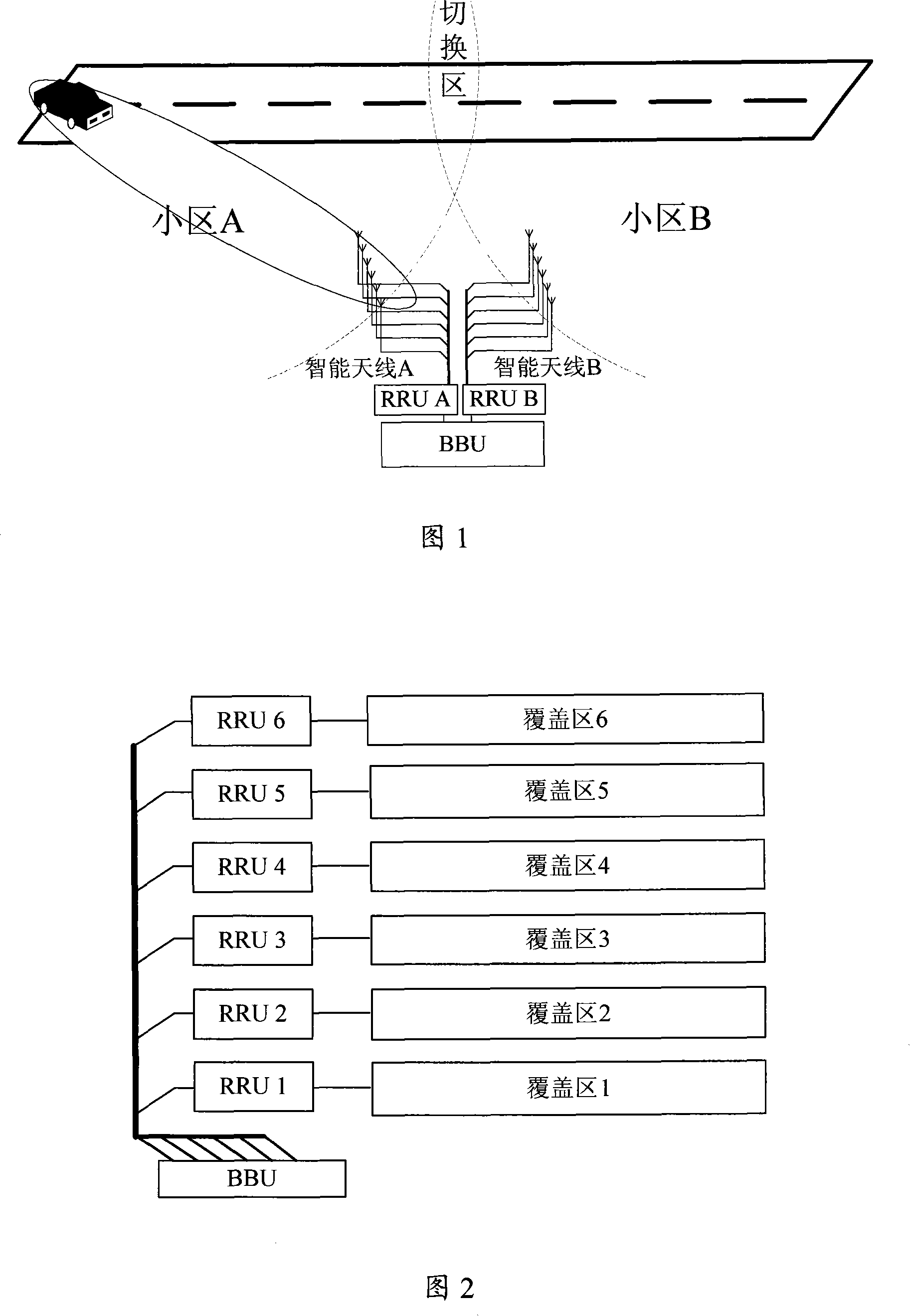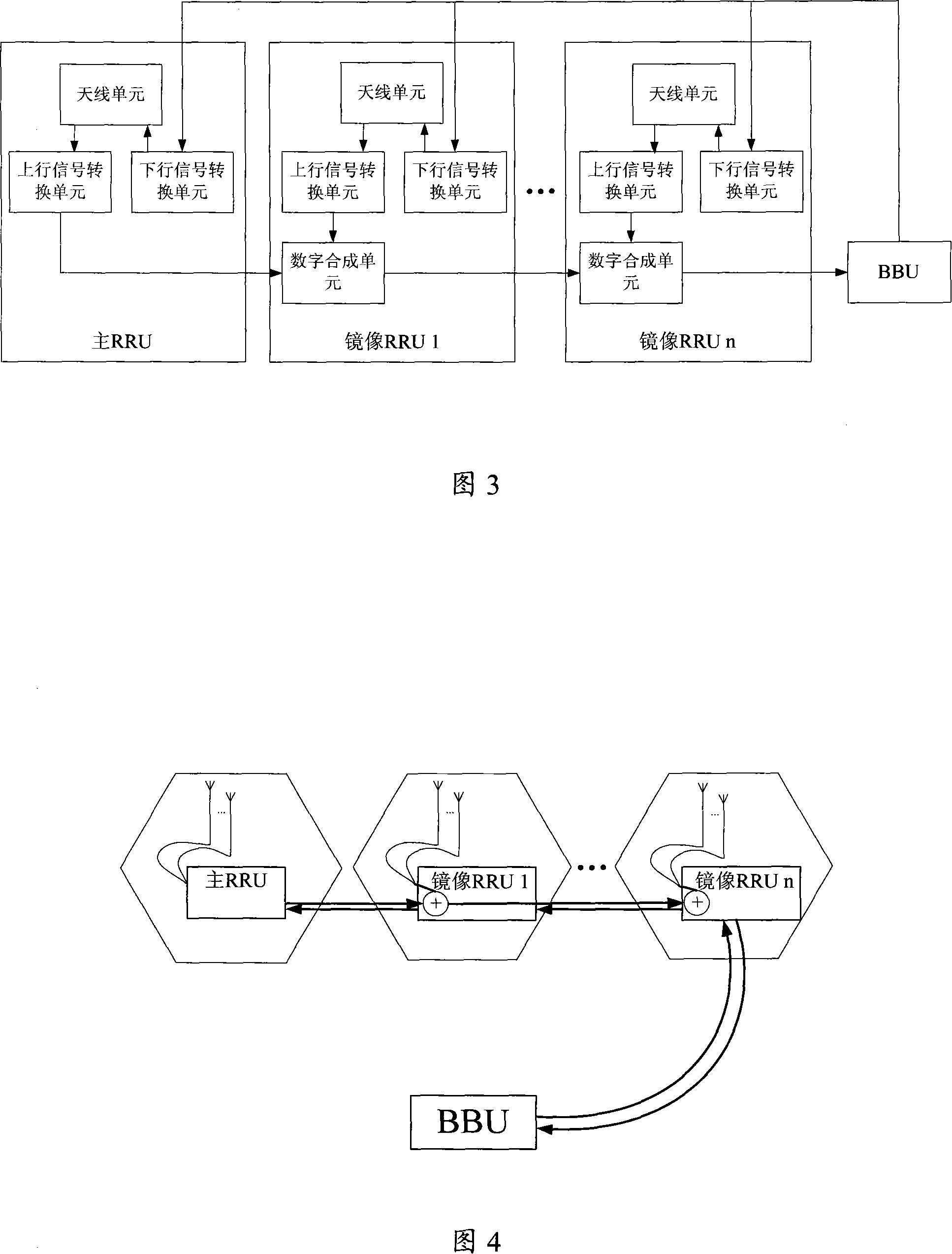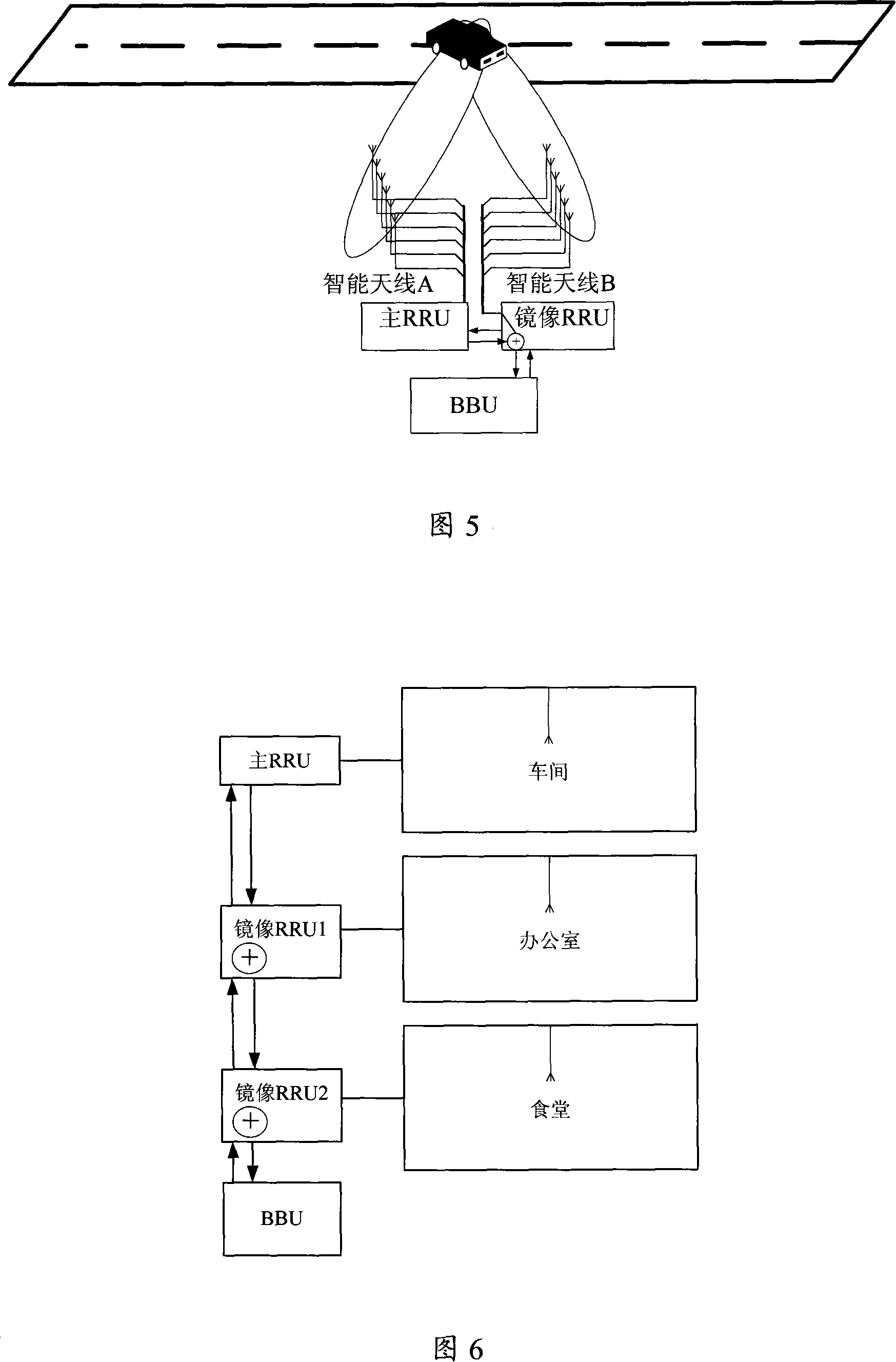Method and system for implementing subarea overlapping using mirror-image radio frequency unit
A radio frequency unit, mirroring technology, applied in electrical components, communication between multiple stations, network planning, etc., can solve problems such as signal distortion, shortened antenna coverage distance, and large number of channels to avoid noise and attenuation, avoid Noise, Demand Reduction Effect
- Summary
- Abstract
- Description
- Claims
- Application Information
AI Technical Summary
Problems solved by technology
Method used
Image
Examples
Embodiment 1
[0043] Embodiment 1 is a scenario where the technical solution of the present invention is applied to one cell covering multiple areas to reduce network construction costs, as shown in FIG. 4 . Antennas in N independent areas are respectively connected to respective RRUs.
[0044] In the downlink direction, the BBU transmits the baseband digital domain signal that needs to be sent to the RRU. Therefore, the signals sent by N RRUs are exactly the same; in the uplink direction, the RRU independently processes the received signal of the antenna and outputs the baseband digital domain signal. The signal transmitted by the RRU and the local sampling signal are digitally superimposed according to the identification of the signal channel, and finally the BBU performs baseband processing on the superimposed signal.
[0045] At the same time, the RRU independently performs power calibration in its coverage area, so that one cell can cover N different coverage areas, thereby achieving t...
Embodiment 2
[0046] Embodiment 2 is a scene where the technical solution of the present invention is applied to expressway coverage, as shown in FIG. 5 . Taking TS-SCDMA technology as an example, it is assumed that each group includes two sets of linear array smart antennas with M antennas, facing two directions of the highway respectively, and each group of smart antennas is connected to one RRU.
[0047] The same function as the existing RRU is that the RRUs perform power calibration and antenna correction on their respective smart antennas. The difference from the existing RRU function is: in the downlink direction, the digital baseband signal output by the BBU is transmitted to the cascaded RRU at the same time, and the two RRUs obtain the same baseband signal and perform subsequent downlink signal processing; in the uplink direction, each RRU pair The signals received by the M antennas are independently processed in the corresponding M signal channels, and the baseband data of the M a...
Embodiment 3
[0049] Embodiment 3 is a scenario where the technical solution of the present invention is applied to indoor coverage, as shown in FIG. 6 . Taking WCDMA technology as an example, it is assumed that each antenna covers a different area, and each antenna is connected to one RRU.
[0050] In the downlink direction, the digital baseband signal output by the BBU is transmitted to all cascaded RRUs. Each RRU obtains the same baseband signal and performs subsequent downlink signal processing; in the uplink direction, each RRU processes the signal received on the antenna independently. And sample the baseband data of the antenna port, then saturate and superimpose the data transmitted by the previous RRU with the sampled data of the local antenna, and pass it to the next RRU, and the last RRU transmits the superimposed data to the BBU for baseband processing.
[0051] It can be seen that by using mirrored RRU technology in multiple unrelated areas, multiple coverage zones of the same ...
PUM
 Login to View More
Login to View More Abstract
Description
Claims
Application Information
 Login to View More
Login to View More - R&D
- Intellectual Property
- Life Sciences
- Materials
- Tech Scout
- Unparalleled Data Quality
- Higher Quality Content
- 60% Fewer Hallucinations
Browse by: Latest US Patents, China's latest patents, Technical Efficacy Thesaurus, Application Domain, Technology Topic, Popular Technical Reports.
© 2025 PatSnap. All rights reserved.Legal|Privacy policy|Modern Slavery Act Transparency Statement|Sitemap|About US| Contact US: help@patsnap.com



